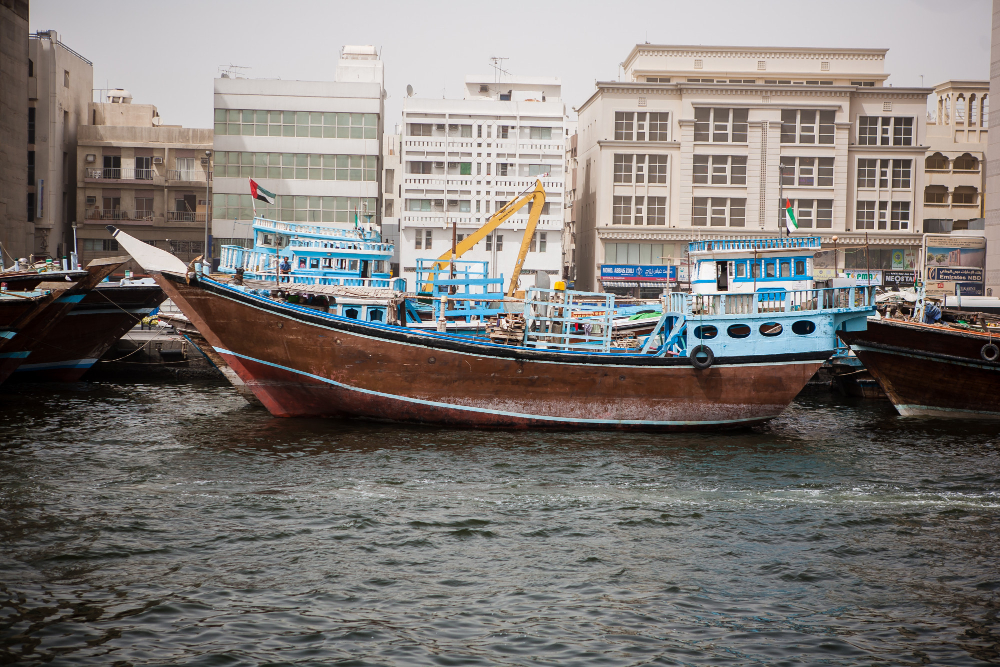Lifelines of National Economy Class 10 notes
Class 10
Lifelines of National Economy Class 10 notes explain the importance will cover different modes of transportation such as railways, roadways, waterways, and airways, along with communication networks like radio, television, and the internet. We will also touch upon the challenges and opportunities associated with these lifelines and how they impact the country's economic growth.
This article is targeted towards students studying in Class 10, who are interested in understanding the fundamentals of the Indian economy and its infrastructure. By the end of this article, students will have a better understanding of the various lifelines that keep the Indian economy running and how they are essential for the country's progress.
Transport- Lifelines of National Economy Class 10 notes
Transportation Goods and services move across three crucial domains of our earth: land, water, and air. We can classify transportation based on these domains into land, water, and air transportation. Let's discuss each of them in detail.
Roadways
.jpg)
Land transportation is known as roadways. India boasts one of the largest road networks in the world, totaling approximately 54.7 lakh km. Below are some reasons for the growing importance of road transportation over rail transportation:
- Road construction costs are lower than those of railway lines.
- Roads can access geographically challenging locations that railways cannot.
- Roads can negotiate steeper slopes and traverse mountains like the Himalayas with ease.
- Road transportation is more cost-effective.
- It provides door-to-door service.
- It connects railway stations, air, and seaports.
- India classifies roads into six classes based on their capacity.
Golden Quadrilateral Super Highways
The National Highway Authority of India (NHAI) is implementing a network of highways called the Golden Quadrilateral that connects India's top four metropolitan cities: Delhi, Kolkata, Chennai, and Mumbai.
National Highways
The Central Public Works Department (CPWD) lays and maintains a network of trunk roads known as National Highways. National Highway No. 1, which runs between Delhi and Amritsar, is the historic Sher-Shah Suri Marg.
State Highways
State Highways are roads that link a state capital with different district headquarters. The State Public Works Department (PWD) constructs and maintains these roads.
District Roads
District Roads connect the district headquarters with other locations in the district, and they are maintained by the Zila Parishad.
Other Roads
Rural roads that link rural areas and villages with towns fall under the category of Other Roads. These roads received special attention under the Pradhan Mantri Grameen Sadak Yojana.
Border Roads
The Border Roads Organisation is responsible for constructing and maintaining roads in the bordering areas of the country. This organisation was established in 1960 to develop strategic roads in the northern and north-eastern border areas.
We can classify roads based on the type of material used in their construction. Examples of such classifications include:
Metalled roads, which may consist of cement, concrete, or bitumen of coal. These roads can withstand all weather conditions.
Unmetalled roads, which become unusable during the rainy season.
Railways carry bulky goods for long and short distances, making them the primary mode of transportation in India's economy. However, rail transport also faces some challenges, such as:
Laying railway lines requires constructing bridges across wide riverbeds. In hilly regions of the peninsular area, tracks are laid through low hills, gaps, or tunnels. The Himalayan mountainous regions present challenges for railway line construction due to high elevation points, sparse populations, and lack of economic opportunities. Laying railway lines on sandy plains is difficult.
Pipelines
Pipeline transportation networks use pipes, usually underground, to transport and distribute fluids like water, crude oil, petroleum products, natural gas, and even solids converted into slurry. In India, there are three significant pipeline networks:
One runs from oil fields in upper Assam to Kanpur, Uttar Pradesh. Another runs from Salaya in Gujarat to Jalandhar in Punjab. The third runs from Hazira in Gujarat to Jagdishpur in Uttar Pradesh.
Waterways - Lifelines of National Economy Class 10 notes

Waterways in India offer a cheap and fuel-efficient means of transportation, especially for carrying heavy and bulky goods. The country has several National Waterways, including the Ganga river between Allahabad and Haldia
(N.W. No.1), the Brahmaputra river between Sadiya and Dhubri
(N.W. No.2), the West-Coast Canal in Kerala (Kottapurma-Kollam, Udyogamandal and Champakkara canals-205 km) (N.W. No.3), specified stretches of Godavari and Krishna rivers along with Kakinada Puducherry stretch of canals (N.W. No.4), and specified stretches of river Brahmani along with Matai river, delta channels of Mahanadi and Brahmani rivers and East Coast Canal
(N.W. No.5). Additionally, Mandavi, Zuari and Cumberjua, Sunderbans, Barak and backwaters of Kerala are inland waterways used for transportation.
Major Ports
India has two major ports and 200 notified non-major ports. The major ports are Kandla in Kachchh, Mumbai, Marmagao in Goa, Mangalore in Karnataka, Kochchi, Tuticorin, Chennai, Visakhapatnam, Paradwip in Odisha, Kolkata (an inland riverine port), and Haldia (a subsidiary port developed to relieve pressure on the Kolkata port).
Airways
Air travel is the fastest and most comfortable mode of transport, providing access to otherwise inaccessible areas such as high mountains, dreary deserts, dense forests, and long oceans. Air India provides domestic and international air services, while Pawanhans Helicopters Ltd. offers helicopter services to Oil and Natural Gas Corporation for its off-shore operations and difficult terrains. However, air travel is often not affordable for the common people.
Communication - Lifelines of National Economy Class 10 notes
Television, radio, press, and films are the major means of communication in India.
The Indian postal network handles parcels as well as personal written communications and is the largest in the world. Airlift is used for first-class mail between stations covering both land and air, while second-class mail includes book packets, registered newspapers, and periodicals carried by surface mail covering land and water transport. India has one of the largest telecom networks in Asia, and Subscriber Trunk Dialling (STD) facilities all over India have been made possible by integrating the development in space technology with communication technology.
Mass communication, which includes radio, television, newspapers, magazines, books, and films, provides entertainment and creates awareness among people about various national programmes and policies. India Radio Channel (Akashwani) broadcasts a variety of programmes in national, regional, and local languages, while Doordarshan, the national television channel, is one of the largest terrestrial networks in the world. India publishes a large number of newspapers in about 100 languages and dialects.
International Trade - Lifelines of National Economy Class 10 notes
.jpg)
Trade refers to the exchange of goods among people, states, and countries. International trade is trade between two countries and is considered the economic barometer for a country. Export and import are the components of trade, and the balance of trade of a country is the difference between its export and import. If the value of exports exceeds the value of imports, it is called a favourable balance of trade, and if the value of imports exceeds the value of exports, it is termed an unfavourable balance of trade. The commodities exported from India to other countries include gems and jewellery, chemicals and related products, agriculture and allied products, etc. The commodities imported to India include petroleum crude and products, gems and jewellery, chemicals and related products, base metals, electronic items, machinery, agriculture and allied products.
Tourism is considered a trade, and more than 15 million people are directly engaged in the tourism industry in India. Tourism in India promotes national integration, provides support to local handicrafts and cultural pursuits, and helps in the development of international understanding about Indian culture and heritage. Foreign tourists visit India for heritage tourism, eco-tourism, adventure tourism, cultural tourism, medical tourism, and business tourism.
Download the eSaral App for complete Class 10 Video lectures, Study material, revision and much more.
Also read,
Class 10 NCERT Science notes -All Chapters
